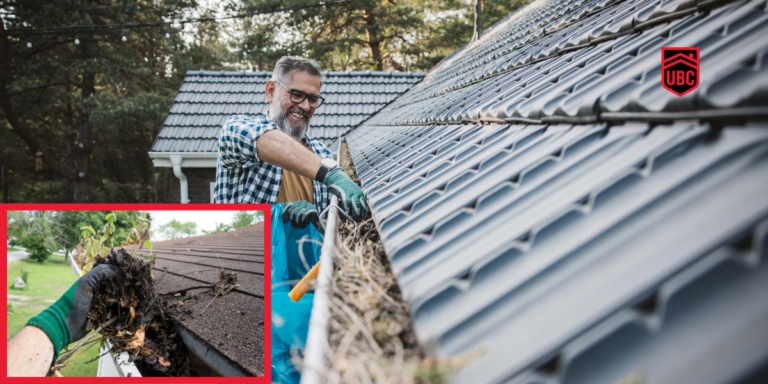Stop Roof Leaks Fast

Stop Roof Leaks Fast!
Just discovered a pesky roof leak? Don’t panic. While a dripping roof can be a stressful discovery, taking swift and informed action can help minimize damage and protect your home. By identifying the source of the leak and implementing temporary fixes, you can stop the immediate problem and buy yourself time to find a lasting solution. Remember, professional help is always the best option for ensuring your roof is properly repaired and your home remains safe and dry.
Identifying the Leak
Visible Water Stains
An obvious sign of a roof leak is the presence of water stains on ceilings or walls. These stains typically appear as brown or discolored patches, often near corners or along edges. If you spot any discoloration, it’s a clear indication of water seeping in from above.
Unexplained Damp Spots
Water stains may not always be visible, but running your hand across suspicious areas on ceilings or walls can reveal dampness. Feeling moisture signifies a likely leak in the roof above that spot. With proper identification, you can address the issue promptly.
As far as identifying roof leaks, it’s crucial to be thorough in your inspection. Checking for signs of moisture damage in the attic, such as water stains on roof rafters or damp insulation, can give you a complete picture of the leak’s source.
Mold Growth
Another indicator of a roof leak is the presence of mold patches on ceilings or walls, especially in areas where moisture shouldn’t accumulate. Mold thrives in moist environments, so if you spot mold growth, it’s a strong sign that water is entering your home through the roof.
Addressing mold growth promptly is vital not only for preventing further damage but also for maintaining a healthy indoor environment. If you notice mold, it’s crucial to tackle the underlying leak to prevent its recurrence.
Missing or Damaged Shingles
The structural integrity of your roof depends on the condition of its shingles. If you observe missing or damaged shingles, such as cracked, curled, or loose ones, your roof may be susceptible to leaks. Damaged shingles can allow water to penetrate the roof’s underlayment, leading to potential leaks.
Inspecting your roof regularly for any signs of damaged shingles can help you address potential leak sources early on. This proactive approach can prevent water infiltration and subsequent damage to your home’s interior.
Granule Buildup in Gutters
Shingle granules play a vital role in protecting your roof from the elements. However, an excessive buildup of granules in gutters can indicate deteriorating shingles and potential roof leaks. If you notice a significant amount of granules during gutter cleaning, it’s a signal that your roof may be prone to leaks.
Regularly cleaning your gutters and monitoring the accumulation of shingle granules can help you identify roof issues before they escalate. Addressing granule buildup promptly can prevent water from seeping into your home and causing further damage.
Inspecting Your Attic
Water Stains on Roof Rafters
Some signs to look for in your attic when inspecting for roof leaks include water stains on roof rafters. These stains indicate that water has seeped through the roof and is causing damage to the structural elements of your attic.
Damp Insulation
For damp insulation, check for areas where the insulation feels wet or damp to the touch. This can indicate that water is entering your attic space, potentially leading to further damage if not addressed promptly.
Another important factor to consider when dealing with damp insulation is the presence of moisture-absorbing materials like fiberglass. If the insulation continues to hold moisture, it can compromise its effectiveness, leading to increased energy costs and potential mold growth.
Mold Growth on Attic Beams
Beams in your attic can also be a breeding ground for mold growth if water has infiltrated the space. Mold patches on attic beams suggest a persistent moisture issue that needs to be resolved to prevent further damage to your home.
Mold growth on attic beams should never be ignored, as mold can pose serious health risks to you and your family. Addressing the root cause of the moisture is crucial to prevent the spread of mold and maintain a healthy living environment.
Taking Action: Safe and Effective Temporary Fixes
Prioritizing Safety
Many homeowners may attempt temporary fixes on their roofs, but safety should always be the top priority. Action should never be taken in wet or windy conditions, and proper safety gear must be worn. If unsure, it’s best to call a professional roofer for assistance.
Tarping the Leak Area
Effective temporary fixes for roof leaks can start with tarping the affected area. To do this, gather a large heavy-duty tarp, duct tape, and wooden boards for support if needed. Position the tarp over the leak, extending it beyond the affected area, and secure it tightly to your roof using duct tape. This solution can help prevent further damage until a professional roofer arrives.
Plus, tarping your roof is a temporary solution and should not replace a permanent fix. Tarps can be easily damaged by strong winds or heavy rain, and they do not address the underlying cause of the leak. Professional repair is always recommended for a long-lasting solution.
Mitigating the Damage: Protecting Your Home
Placing Buckets or Containers Under Active Leaks
To quickly address active leaks, place buckets or containers under the affected areas to collect the water and prevent damage to your floors, furniture, or belongings.
Moving Furniture and Valuables Away from the Affected Area
Moving furniture and valuables away from the affected area is crucial to prevent water damage. Protect your possessions by relocating them to a dry area until the leak is repaired.
It is important to safeguard your belongings and living space during a roof leak. By promptly placing buckets under active leaks and moving furniture away from the affected area, you can minimize potential damage as you await professional repairs. Act swiftly and protect your home from further harm.
Clear Communication with Your Insurance Company
Protecting yourself and your property, clear communication with your homeowner’s insurance company is vital. Report the leak promptly to inquire about coverage for any damage and understand the process for filing a claim.
Clear communication with your insurance company is key to ensuring that you’re covered for any damages caused by a roof leak. Be proactive in reporting the issue and understanding your policy to mitigate any financial burdens associated with repairs.
Protect Your Home from Roof Leaks
Don’t let a roof leak turn into a homeowner’s nightmare. By quickly identifying the source of the leak, taking safe temporary measures, and partnering with a qualified roofer, you can protect your home and ensure lasting solutions. Act promptly, prioritize safety, and trust professionals to keep your home safe and secure.
At the United Building Contractors (UBC) team, we offer top-notch roofing solutions that emphasize quality, professionalism, and customer satisfaction, ensuring that your roofing project is in safe hands.
Don’t delay – address roof leaks fast and preserve your peace of mind. Contact United Building Contractors (UBC) at 952-800-ROOF (7663) for a free roof replacement estimate or use our instant estimate tool on our website.
FAQ
Q: How can I identify a roof leak?
A: Signs of a roof leak include visible water stains on ceilings or walls, unexplained damp spots, mold growth, missing or damaged shingles, and granule buildup in gutters. Inspecting your attic for moisture damage can also help pinpoint the leak.
Q: What temporary fix can I use to stop a roof leak?
A: One temporary fix is tarping the leak area. This involves gathering a heavy-duty tarp, duct tape, and wooden boards for support. Carefully accessing the roof, positioning the tarp over the leak, securing it with boards if needed, and fastening it tightly to the roof can help prevent water from entering your home.
Q: Why should I hire a professional roofer to address a roof leak?
A: Professional roofers can identify the root cause of the leak, provide lasting repairs using quality materials, and offer warranties on their work. They ensure that the underlying issue is addressed to prevent future leaks and extend the life of your roof, giving you peace of mind and ensuring your home is protected.







